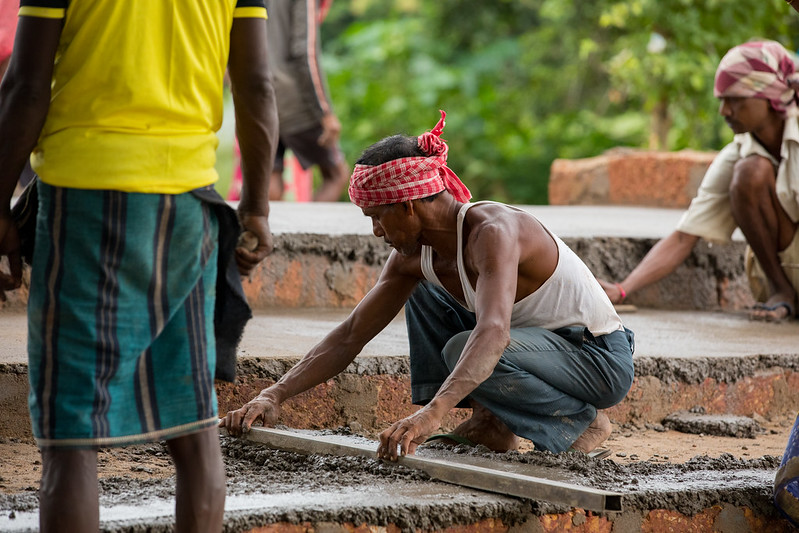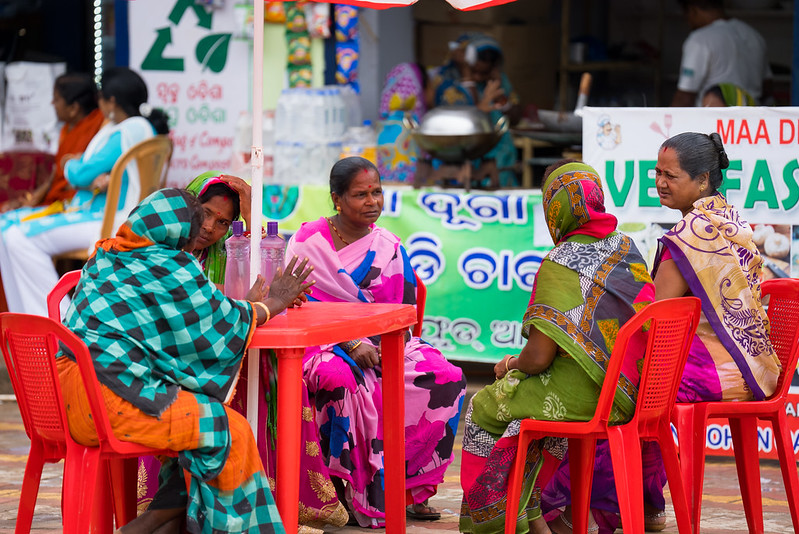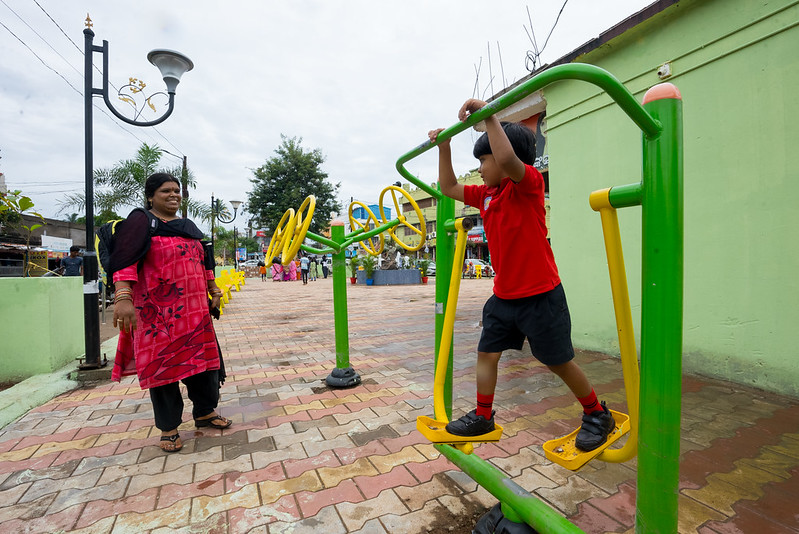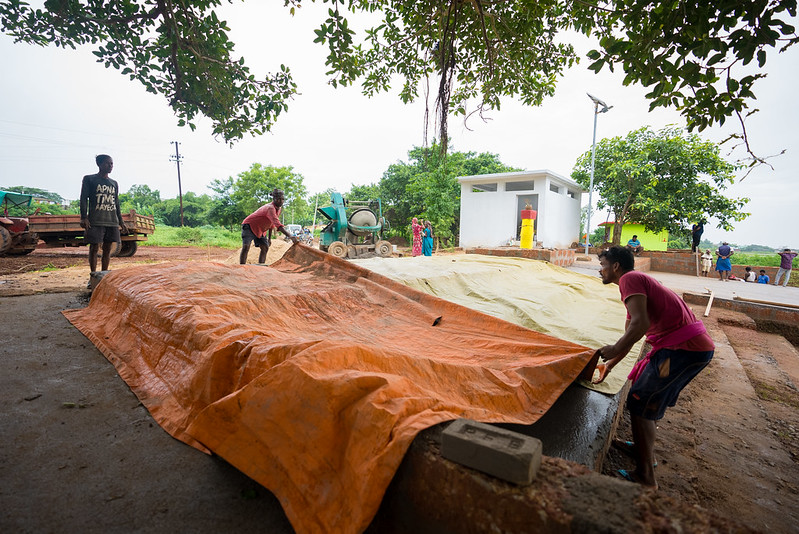
When India’s federal government announced a public health lockdown on March 24, 2022 in response to the COVID-19 pandemic, it generated desperate scenes. Economic activity ground to a halt. Millions of migrant workers traveled back to their home states.
In the eastern Indian state of Odisha, it quickly became clear to officials that they were facing not only a public health emergency, but a potentially catastrophic unemployment and poverty crisis.
The state’s large urban poor population could not survive the lockdown on state aid alone. Slum dwellers — which make up about 25% of Odisha’s population in cities like Bhubaneswar, Cuttack and Rourkela — as well as thousands of migrant workers returning from other states were particularly vulnerable. Many worked primarily in the informal sector, earning their livelihood from street hawking and petty trading of fruit, textiles and small household goods; day labor; shoe shining and other forms of low-skilled self-employment. Informal workers lacked the job security or social safety nets to support them through the shutdown.
So Odisha’s Housing and Urban Development Department (HUDD) decided on an ambitious response. Within weeks of the shutdown, the department launched the Urban Wage Employment Initiative (UWEI), a large-scale jobs program to employ the urban poor and informal and migrant laborers in public works projects — mainly ones targeted at building resilience to climate change.
Since 2020, UWEI has supported vulnerable populations and made Odisha’s slums more resistant to climate change while creating a permanent public employment program for the urban poor. Its story is an example of how governments can deliver relief in a moment of deep crisis while fostering long-term sustainable urban development.
Engaging Informal Workers: A New Model for Public Works Projects
While public employment programs have existed in India for a long time, most focus on rural settings. Executing a large-scale jobs program in cities was not something that had been done before.
HUDD leadership quickly tapped into existing urban service programs like the Indian government’s JAGA Mission, a slum-upgrading program established in 2017. They also worked closely with local community organizations such as slum dwellers’ associations and women’s groups to plan public works projects. This was a departure from the traditional process, which would involve competitive bids from professional contractors. By designating community groups as the project’s “alternative service providers,” the initiative made sure all benefits stayed in the local community and that marginalized groups, including women, received job opportunities. (Learn more about this approach in WRI’s World Resources Report: Towards a More Equal City.)
Community organizations also gathered feedback from citizens about local infrastructure needs, identified job seekers and supervised the execution of works projects.

Changing Odisha for the Better Through Climate-resilient Infrastructure
The public works projects included in UWEI’s initial stages relieved immediate joblessness and acute poverty while also creating new infrastructure and amenities for cities in Odisha. For example, UWEI commissioned the construction of rainwater-harvesting structures, undertook large-scale water drain desilting, and maintained flood-mitigation and monsoon preparedness infrastructure — critical infrastructure for communities prone to floods and typhoons.
Across all of Odisha’s 114 cities, UWEI workers built 800 new mini parks, 300 playgrounds, 1,200 open-air gyms, 350 kilometers of paved walkways, and 1,000 playgrounds and open-air community centers. And the number of community assets continues to grow.

Pabitra Choudhury, the secretary of a regional women’s group, said that before the UWEI program, people used outdoor toilets, roads were muddy and dirty, and children would frequently get infections from playing in the dirt and dust. “Now, children are playing with swings and other things,” Choudhury said. “They are developing. After the community hall was built, children are coming to watch TV, listen to storytelling, learning dance. Our community is clean. For that we are feeling good.”
In February 2021, the State Government of Odisha converted UWEI into a permanent successor program, called MUKTA (translated as the “Chief Minister’s Wage Employment Scheme,”or Mukhyamantri Karma Tatpara Abhiyan), which continues to be implemented by Odisha’s HUDD. MUKTA aims to continually provide work opportunities through community groups.
Not only has Odisha as a whole benefited from better physical infrastructure, many small business owners and self-employed workers also experienced improved economic prospects.
“By getting MUKTA and developing this area, shops opened like a manure shop, tiffin shop and a fast food shop,” said Sibani Nayak, president of the Maa Banadurga slum association. “We are getting more customers; we are having good income.”

A Lasting Solution for Odisha’s Informal Workers
UWEI was an effective short-term emergency response program to the economic tumult of the pandemic lockdown, ultimate employing 700,000 urban workers, with $12 million in wages paid out. The initial program showed that public employment could be delivered through a multi-level, community-based approach that benefited the state’s most vulnerable populations.
The experience of running UWEI and then institutionalizing it as MUKTA changed mindsets in the state and national government about how pro-poor urban development can be effectively delivered. It demonstrates how public employment schemes, previously implemented in mainly rural contexts in India, may be set up to benefit informal workers in cities.
While most cities around the world are no longer facing COVID-19-related lockdowns, with ongoing threats from climate change and other unforeseen challenges, the future of urban governance appears to be shifting into a mode where uncertainty is the norm rather than the exception. Odisha’s UWEI-MUKTA project shows how local governments can combine calculated risk-taking with creatively leveraged resources to respond to crises with solutions that benefit communities over both the short and long terms.
The 2021-2022 WRI Ross Center Prize for Cities celebrates projects and initiatives showing how to live and thrive in turbulent times. From five finalists, one grand prize winner will be announced February 1, 2023.
This article originally appeared on WRI’s Insights.
Salome Gongadze is the Evaluation, Learning, and Engagement Specialist for WRI Ross Center Prize for Cities.
Anne Maassen is the Global Lead for WRI Ross Center Prize for Cities.






